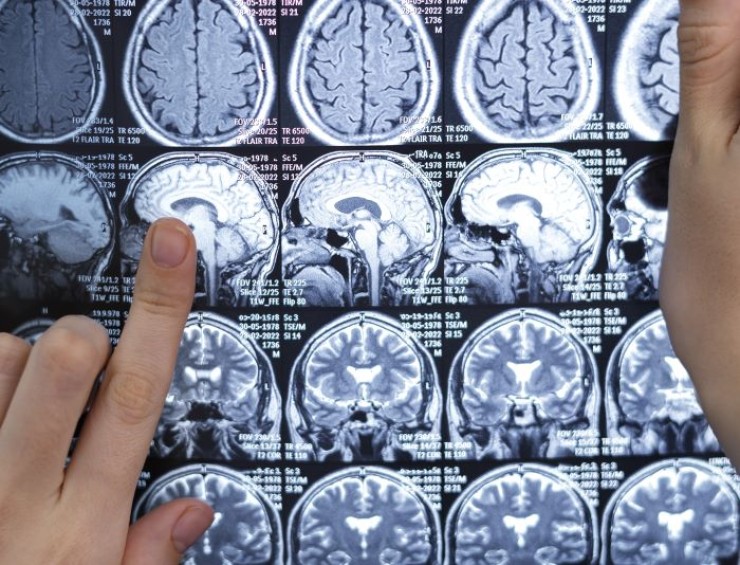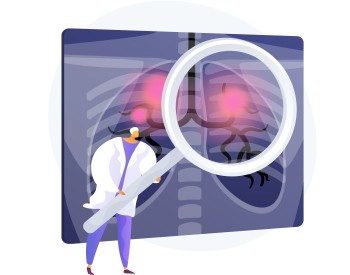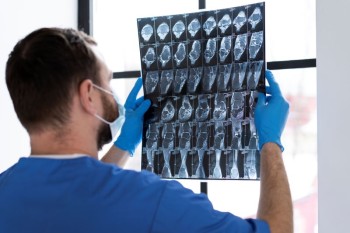
CT Cisternography Scan stands as a specialized imaging procedure that provides detailed insights into intracranial structures, particularly focusing on cerebrospinal fluid dynamics.
CT Cisternography Scan in India with Cost
CT Cisternography Scan: Navigating Intracranial
Clarity
Introduction
Exploring Intracranial Insights with CT Cisternography Scan
CT Cisternography Scan stands as a specialized imaging procedure that provides detailed insights into intracranial structures, particularly focusing on cerebrospinal fluid dynamics. This comprehensive guide aims to illuminate the significance, procedure, and applications of CT Cisternography Scan, offering a thorough understanding of its role in intracranial diagnostics.
Understanding CT Cisternography Scan
What is CT Cisternography Scan?
CT Cisternography Scan is an advanced imaging technique that utilizes computed tomography to capture detailed images of the subarachnoid spaces within the brain and spinal cord. This specialized scan offers a comprehensive view of cerebrospinal fluid (CSF) circulation and aids in the diagnosis of conditions affecting the central nervous system.
The Significance of CT Cisternography Scan
Precision in Intracranial Imaging
CT Cisternography Scan plays a pivotal role in achieving precision in intracranial imaging, offering detailed views of CSF spaces to identify conditions such as cerebrospinal fluid leaks, cysts, or other abnormalities affecting the central nervous system.
Evaluation of Cerebrospinal Fluid Dynamics
With high-resolution images, the scan facilitates a comprehensive evaluation of cerebrospinal fluid dynamics, assisting healthcare professionals in diagnosing and planning appropriate interventions for intracranial disorders.
The Procedure: A Step-by-Step Guide
Patient Preparation
Patients undergoing CT Cisternography Scan typically require minimal preparation. It's essential to communicate any allergies or relevant medical history to the healthcare team.
Contrast Injection and Image Acquisition
Contrast dye is injected into the subarachnoid space, and the CT scanner captures multiple high-resolution images, providing detailed views of cerebrospinal fluid spaces within the brain and spinal cord.
Applications of CT Cisternography Scan
Diagnosing Cerebrospinal Fluid Leaks
CT Cisternography Scan is highly effective in diagnosing cerebrospinal fluid leaks, offering precise images that assist in determining the location, extent, and characteristics of the leaks.
Identifying Cysts and Other Abnormalities
The detailed imaging capabilities of this scan make it an invaluable tool for identifying cysts, tumors, or other abnormalities affecting cerebrospinal fluid dynamics, contributing to accurate diagnoses.
Advantages and Considerations
Advantages of CT Cisternography Scan
Detailed Visualization of Subarachnoid Spaces
CT Cisternography Scan provides detailed visualization of subarachnoid spaces, ensuring accurate assessment and aiding in the identification of various intracranial conditions.
Comprehensive Cerebrospinal Fluid Assessment
The procedure offers a comprehensive assessment of cerebrospinal fluid dynamics, allowing for a thorough understanding of intracranial health.
Considerations and Precautions
Contrast-Related Considerations
While generally safe, the medical team considers any potential allergies or kidney issues that might affect contrast utilization.
Radiation Exposure
As with any CT scan, consideration is given to radiation exposure. The healthcare team carefully evaluates the benefits against the risks for each patient, prioritizing patient safety.
Conclusion
In conclusion, CT Cisternography Scan emerges as an invaluable diagnostic tool, providing detailed and high-resolution images for precise assessment of intracranial conditions. From cerebrospinal fluid leaks to cysts, this imaging technique significantly contributes to enhancing intracranial health diagnostics.
FAQs: Clarifying
CT Cisternography Scan
1. Is CT Cisternography Scan a painful procedure?
No, the procedure is generally well-tolerated. Patients may experience mild discomfort during contrast injection.
2. How long does a CT Cisternography Scan take?
The procedure typically takes around 30 to 60 minutes, depending on the patient's condition.
3. Are there any dietary restrictions before a CT Cisternography Scan?
Fasting may be required before the procedure. Patients are advised to follow any instructions provided by the healthcare team.
4. Can pregnant women undergo CT Cisternography Scan?
While generally avoided during pregnancy, in specific cases, the benefits and risks are carefully evaluated to make an informed decision.
5. How often is CT Cisternography Scan recommended for follow-up examinations?
Follow-up scans are scheduled based on the individual's medical history and the presence of specific intracranial conditions.
6. Is CT Cisternography Scan safe for children?
CT Cisternography is generally safe for children, and the decision to proceed is made based on the specific medical condition and the necessity of the scan. Pediatric patients may require extra attention to dosage considerations.
7. What conditions can CT Cisternography help diagnose?
CT Cisternography is valuable in diagnosing various intracranial conditions, including cerebrospinal fluid leaks, cysts, tumors, and abnormalities affecting the central nervous system.
8. Are there any side effects associated with the contrast dye used in CT Cisternography?
While rare, some individuals may experience mild side effects such as nausea, flushing, or a metallic taste after contrast injection. Allergic reactions are possible but uncommon, and healthcare providers are prepared to manage them.
9. Can individuals with kidney issues undergo CT Cisternography?
Individuals with kidney issues need special consideration regarding contrast dye usage. The healthcare team assesses kidney function and adjusts the procedure accordingly to ensure safety.
10. How soon can a patient resume normal activities after CT Cisternography?
Most patients can resume normal activities immediately after the procedure. However, some may be advised to take it easy for a short period, especially if sedation is administered.
Remember, these FAQs aim to provide general information, and individuals should consult with their healthcare providers for personalized advice based on their specific health conditions.
(0)
Login to continue



